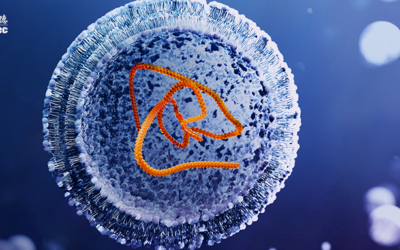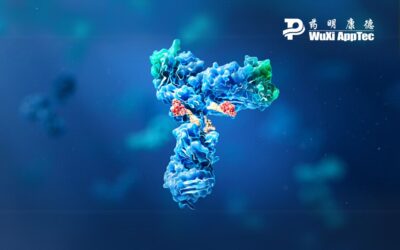Preclinical toxicological testing is a critical early milestone in drug development, acting as a gateway to clinical trials. It not only assesses a drug’s safety, efficacy, and reactivity but also guides dosing and delivery decisions, highlighting the compound’s strengths. This stage is crucial for understanding a drug’s interaction with biological systems, shaping its development path.
The decision to proceed with preclinical testing requires careful consideration of the drug’s properties, preliminary data, and potential regulatory hurdles. Developers must evaluate the drug’s mechanism, its pharmacodynamic (PD) and pharmacokinetic (PK) profiles, and possible side effects. This process is essential, not just for regulatory compliance but for ensuring the drug’s potential to benefit patients. Deciding when a drug is ready for this stage involves nuanced questions about its readiness and the broader context of its development.
Have You Done the Basics?
There are a multitude of factors to consider before deciding if a drug is ready for preclinical toxicological testing. But one of the most obvious, and important, is the drug’s stability. Stability in this context means how efficacious and safe the drug will be within the body or across the proposed shelf life. Making sure this is up to scratch prior to preclinical toxicological testing will make the entire process smoother and reassure developers the drug is nearing readiness.
It’s also crucial that developers know their dose level determinations. This means having a good understanding of the correct dosage that can be safely administered to humans, establishing a therapeutic window and identifying potential for adverse effects related to the dose. These pharmacodynamic and pharmacokinetic measures guide the subsequent dosing regimens for the trial and its safety margins.
Have You Considered Everything?
When determining drug readiness, preparation is key, and certain key decisions need to be made prior to embarking on preclinical toxicological studies. Developers must choose their toxicologist wisely. Afterall, not all scientists are created equal. A toxicologist guides the drug optimization process through their analysis, discerning patterns, and predicting potential human responses. If a drug developer or sponsor finds they don’t have anyone with the experience and knowledge to carry out testing in-house, they should consider working with a lab partner.
Developers must also ensure they select the correct in vivo testing system. The chosen model must adequately—not necessarily identically mirror—the human metabolic processes, receptor targets and potential off-target effects. If researchers choose the wrong model, results can be skewed, which can result in inconclusive safety data and potentially endanger patients.
Finally, navigating the complexity of drug development requires a keen awareness of how various factors influence preclinical toxicological testing. The diversity of drugs means they each respond differently to testing, shaped by several key considerations:
- Target patient group: The specific demographics, such as children or immunocompromised individuals, impact safety assessments due to their unique physiological characteristics.
- Route of administration: How a drug is delivered—oral, intravenous, or topical—significantly alters its ADME (absorption, distribution, metabolism, and excretion) profile, affecting how it should be evaluated.
- Drug type & class: The specific characteristics of a drug, whether it’s a neuroactive compound, an anti-cancer agent, or another type, dictate its testing pathway, tailoring the approach to its unique properties and intended effects.
Understanding these factors is essential for a tailored and effective preclinical testing strategy, ensuring a drug’s safety and efficacy are thoroughly evaluated before advancing to clinical trials.
Are You Prepared for Potential Challenges?
Embarking on preclinical testing in drug development involves navigating a landscape filled with regulatory hurdles, predictive limitations, and timing uncertainties. Each challenge demands strategic foresight and adaptability but facing these challenges head-on with informed planning and a thorough understanding of the testing landscape is crucial for a successful transition from preclinical research to clinical trials.
First, the path to regulatory approval is complex, with guidelines that are broad to encourage innovation, especially in new fields like gene therapy. While these guidelines offer a framework, they require adept scientific interpretation and a commitment to integrity, without providing a one-size-fits-all roadmap.
Next, in vivo studies are invaluable for early insights, yet the leap from data to human outcomes is fraught with challenges. Put simply, there is a notable gap in the predictive capability from one to the other. Differences between species mean results must be interpreted with care, acknowledging the limitations in predictability.
Finally, the duration of preclinical studies can greatly fluctuate, influenced by the drug’s characteristics, development phase, and specific testing required. Delays can arise from numerous factors, making flexibility and robust planning essential components of preclinical strategy.
Have You Selected the Right Lab Partner?
Toxicology testing is a complex field. The correct approach requires sophisticated facilities, expertise, and robust processes. Drug developers and sponsors sometimes find that the complex nature of the task means it goes beyond their internal capabilities, and they need to find an experienced lab partner.
Collaborating with a lab testing partner is a strategic decision. These organizations can bring a wealth of expertise, resource infrastructure and experienced professionals, and are often able to preempt potential pitfalls, provide more accurate and conclusive results and prepare candidates for IND submission.
A Final Word
Preclinical toxicological testing is only going to become more important as the therapeutic endeavors and complexity of the drugs increase. This phase of development establishes a crucial safety baseline for potential therapeutics. Drug developers, sponsors and testing partners all must remember the importance of this stage of the process, and ensure they’re properly prepared for everything it entails.
As a global company with operations across Asia, Europe, and North America, WuXi AppTec provides a broad portfolio of R&D and manufacturing services that enable the global pharmaceutical and life sciences industry to advance discoveries and deliver groundbreaking treatments to patients. Through its unique business models, WuXi AppTec’s integrated, end-to-end services include chemistry drug CRDMO (Contract Research, Development and Manufacturing Organization), biology discovery, preclinical testing and clinical research services, helping customers improve the productivity of advancing healthcare products through cost-effective and efficient solutions. WuXi AppTec received an AA ESG rating from MSCI for the fourth consecutive year in 2024 and its open-access platform is enabling around 6,000 customers from over 30 countries to improve the health of those in need – and to realize the vision that “every drug can be made and every disease can be treated.”


